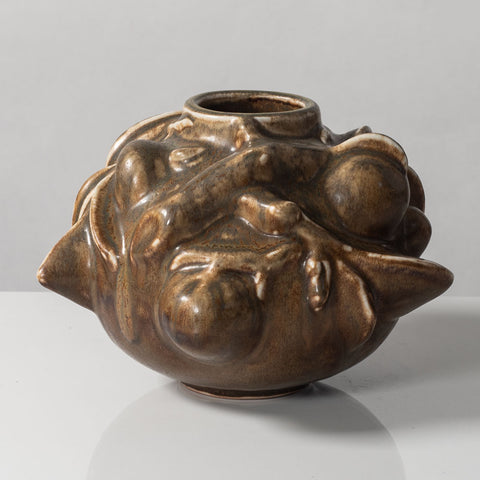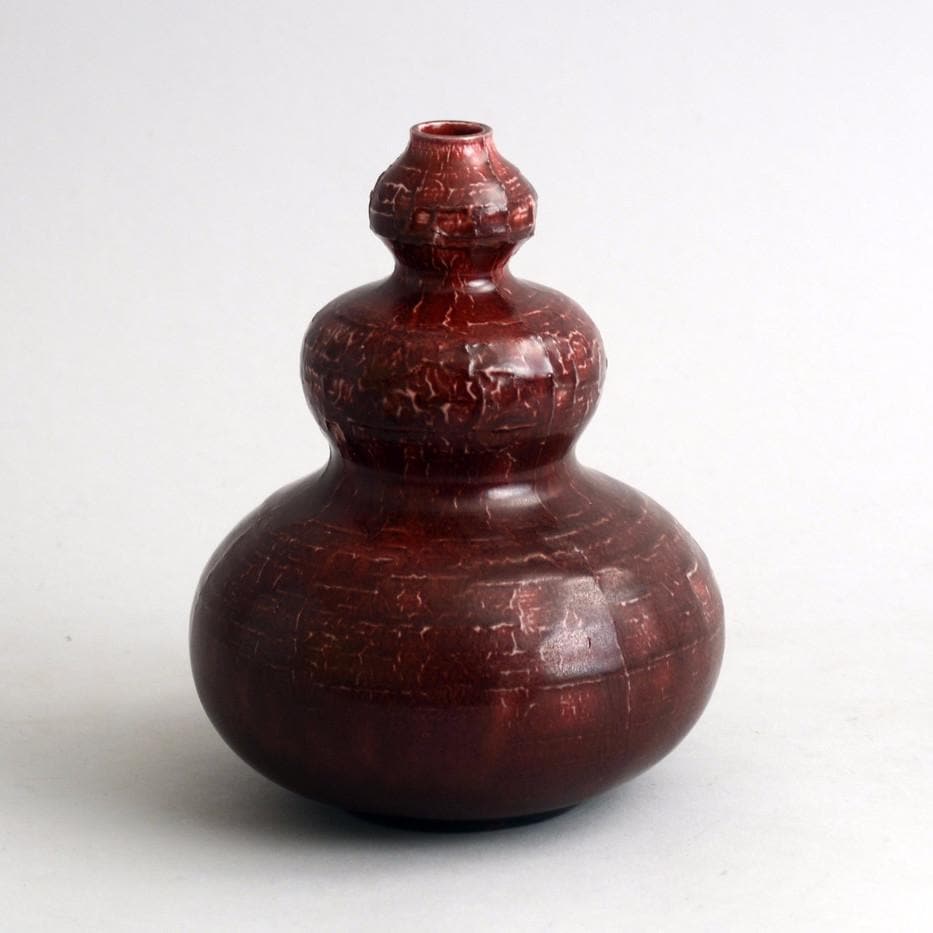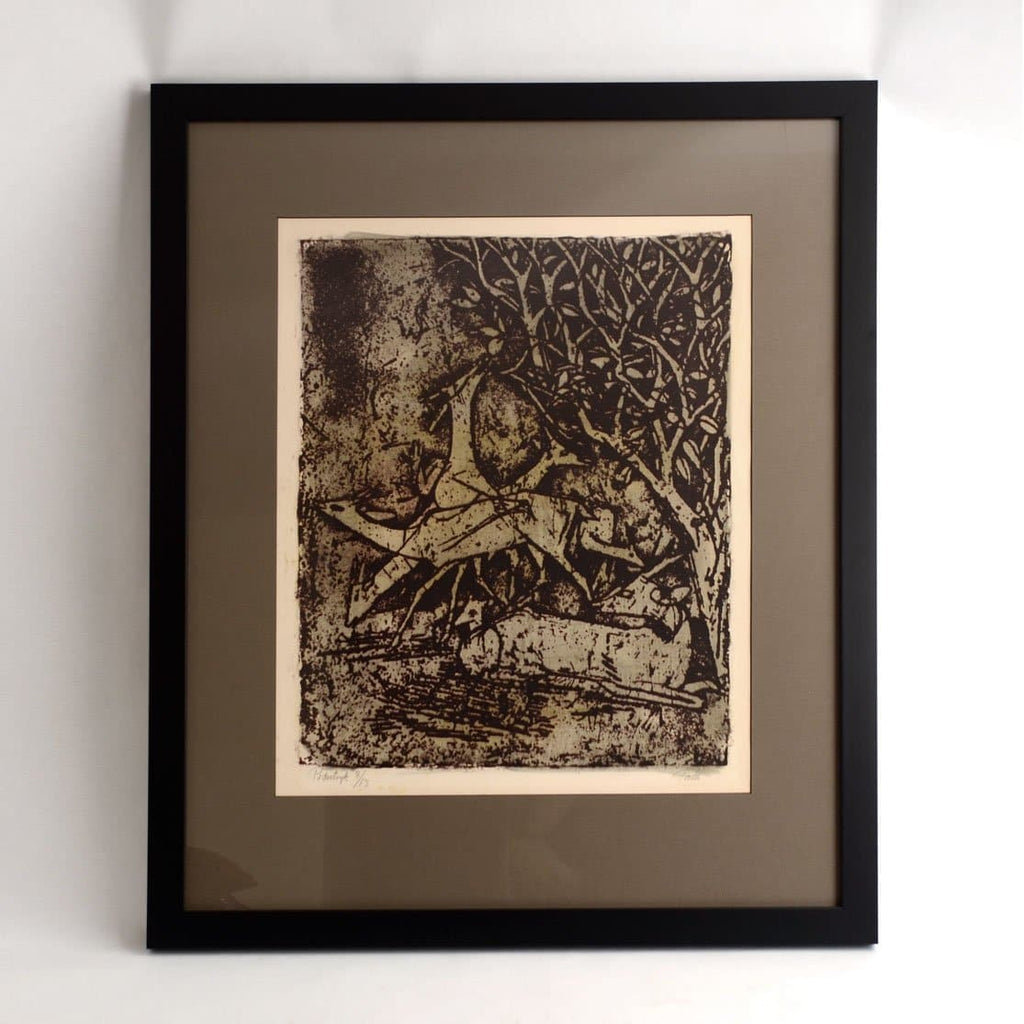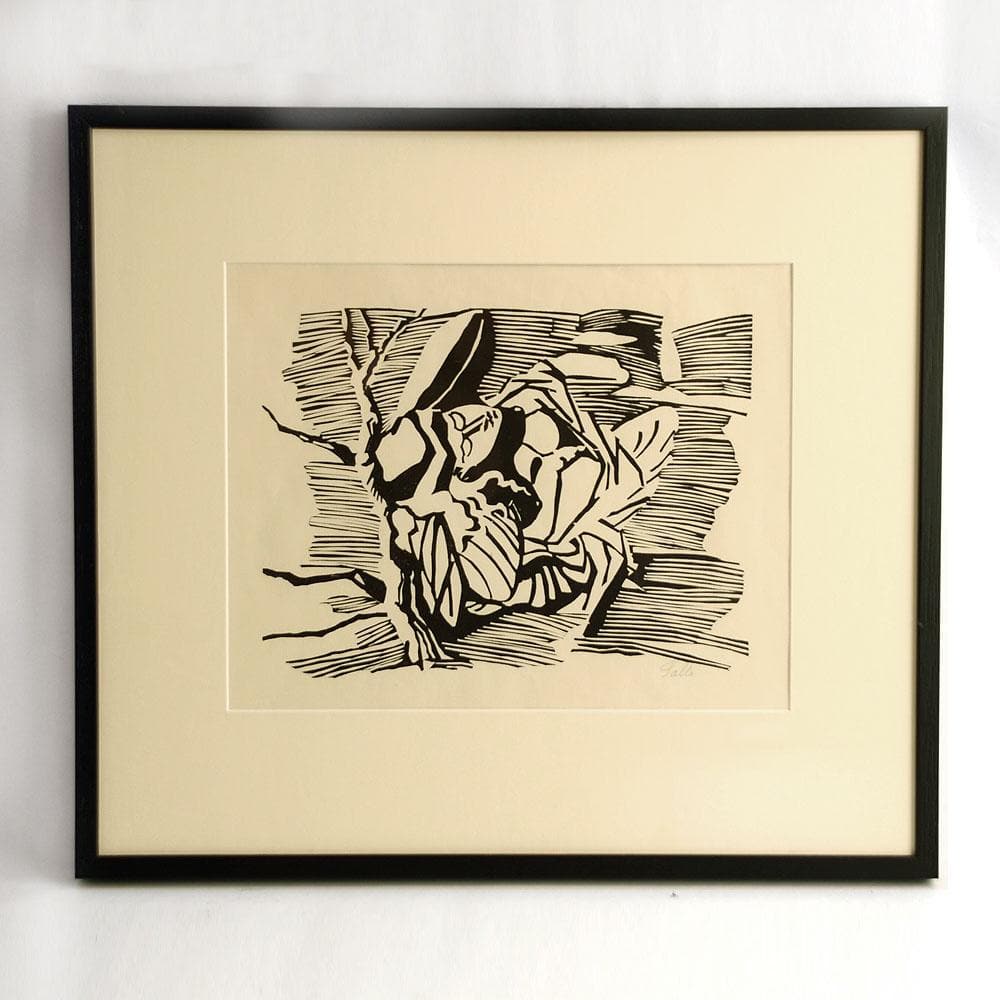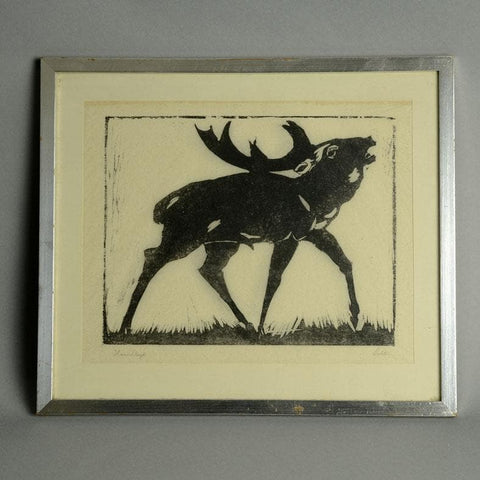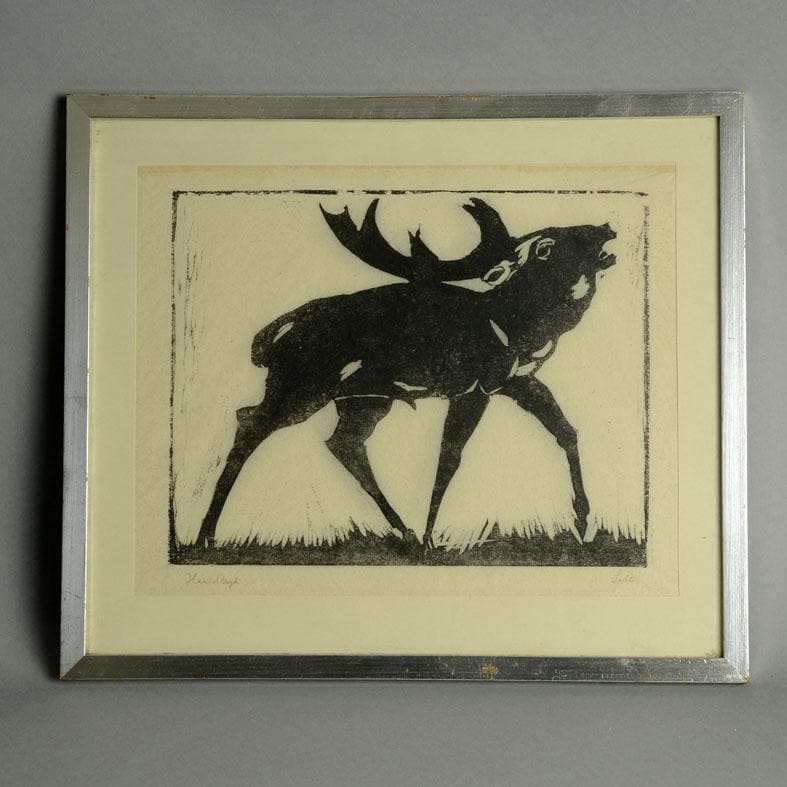Axel Salto
Axel Salto was born in 1889 in Copenhagen, and in his youth studied at the Royal Danish Academy of Fine Arts from 1909 to 1914. Salto’s early work subtly reflected certain iconography from classical languages and Greek mythology, as well as the visual motifs of Art Deco. His work tended to oppose functionalist aesthetics in favor for more sculptural and botanical forms. Salto used relief patterns and ornamentations on his pieces as an instrument for various glazing techniques, stating that he intended his forms to be a "machine for the glaze" , hence the incised line patterns and ribbing of the Living Stones forms, leading to the protrusions of the Budding forms, and progressing further to the more sculptural Sprouting and Fruiting forms. Although his subject matter was primarily drawn from nature, it was expressed in a modernist Art Deco style.
In 1916, Salto visited Paris and met Pablo Picasso and Henri Matisse, and the meeting had considerable impact on Salto and his artistic ambitions. Salto returned to Denmark and established the influential albeit short-lived art journal, Aftonbladet (The Blade). As editor and contributor, Salto’s aim was to spark a conversation of Modernist art and theory in Northern Europe. Published from 1917 until 1919, contributors included Otto Gelsted (1888-1968), Poul Henningsen (1894-1967), and Harald Giersing (1881-1927), with original artwork by Vilhelm Lundstrøm (1893-1950), Olaf Rude (1886-1957), and William Scharff (1886-1959).
In 1921, Salto formed a group of experimental artists who lived and worked together in Paris. The group, which consisted of Svend Johansen (1890-1970), Vilhelm Lundstrøm, and Karl Larsen, exhibited their art regularly in Paris throughout the 1920s. From 1923 until 1929, Salto worked with Danish porcelain manufacturer Bing & Grondahl in Copenhagen, receiving a silver medal for pieces exhibited at the Paris World Fair in 1925. During the 1930s, Salto joined the porcelain factory Royal Copenahgen
Salto received many awards and accolades including the Paris World Exhibition Grand Prix in 1937, the Eckersberg Medal in 1938,the Milan Triennial Grand Prix in 1951, and the Prince Eugen Medal in 1959. Although Salto is most known for his ceramic pieces, he was an active painter throught his life; illustrating several children's stories and poetry, as well as designing textiles for the Danish manufacturer L.F. Foght.
Salto passed away in 1961 in Frederiksberg. He is buried in Fredericksberg Old Cemetary.
Use tags to the left to sort by form, color, size, etc."Pantheus" framed woodblock print of a boar by Axel Salto N6284
$1,450.00 USD
Artist Axel Salto
Lithograph with scene of deer in woodland by Axel Salto N6646
$1,200.00 USD
Artist Axel Salto

